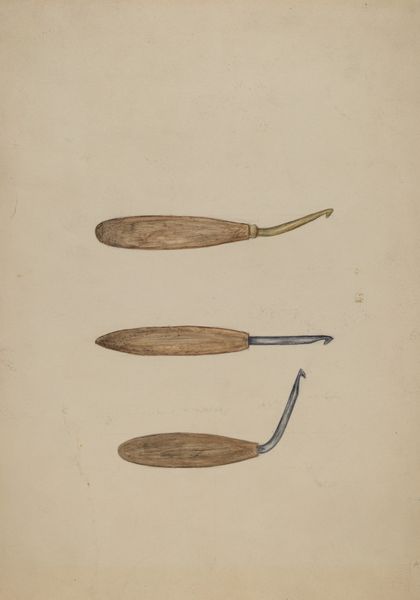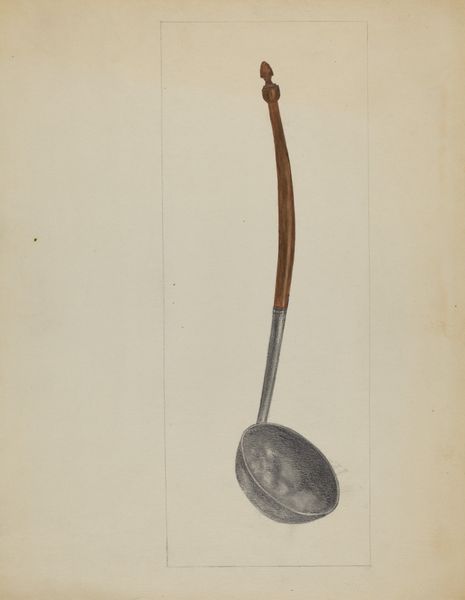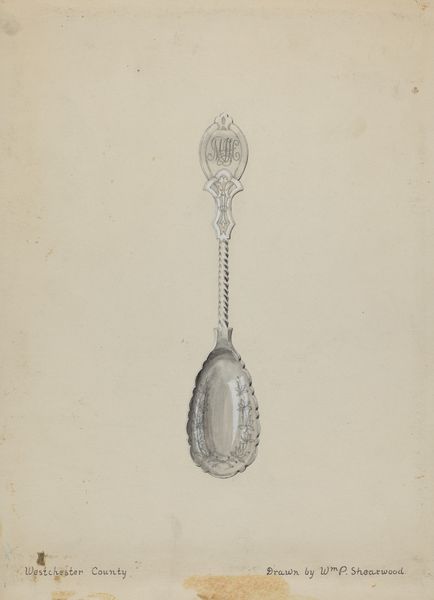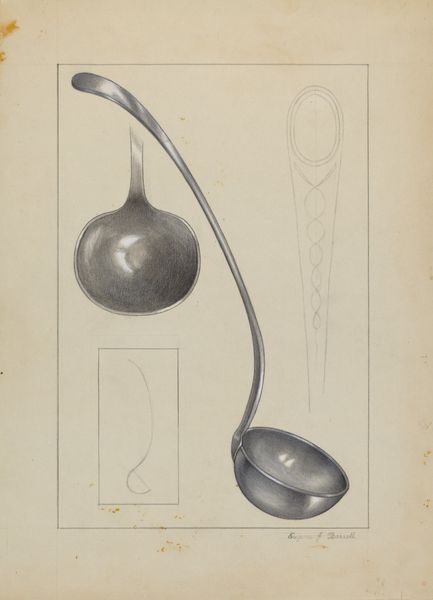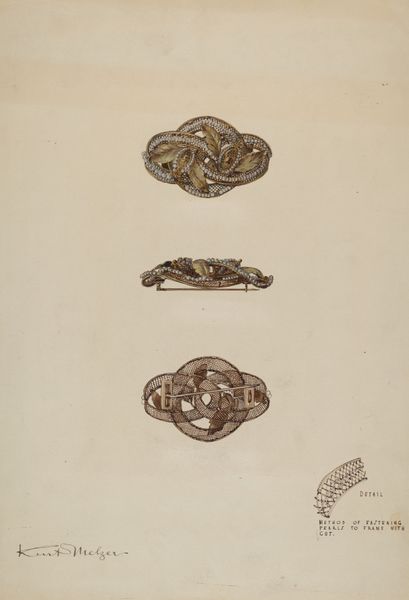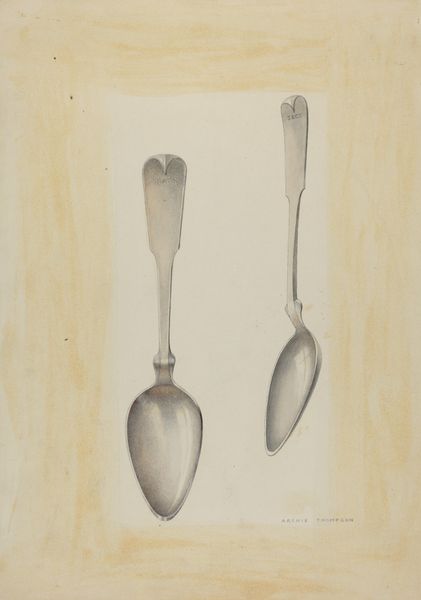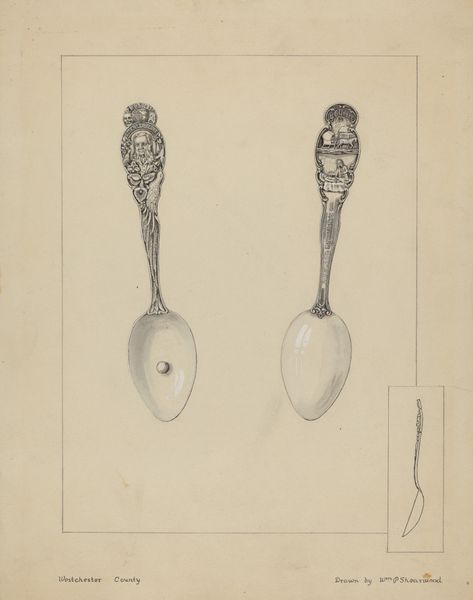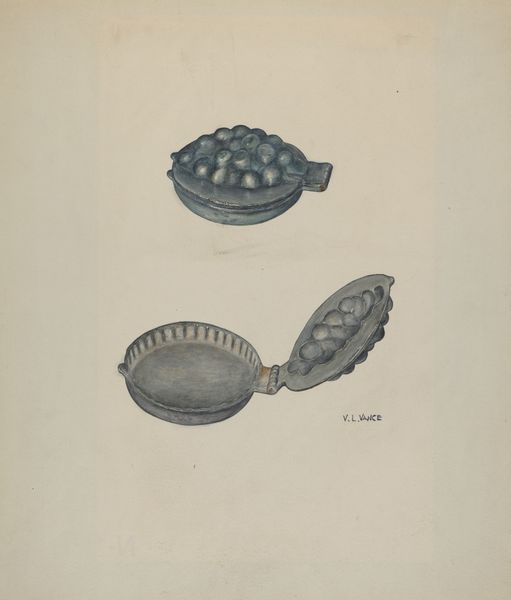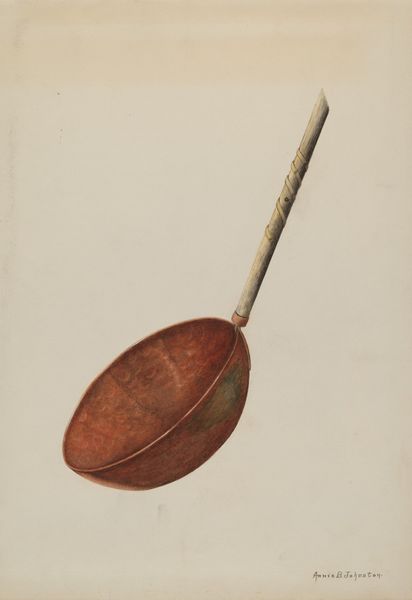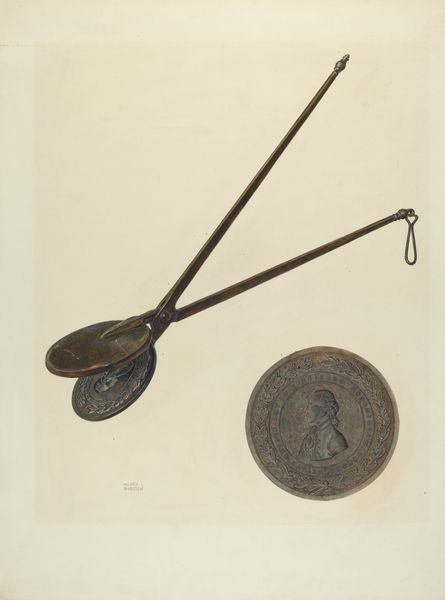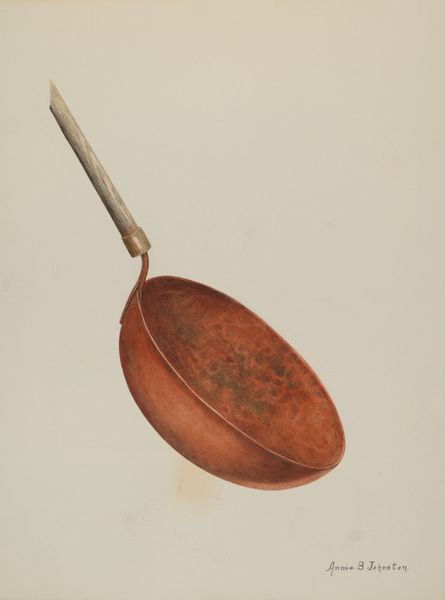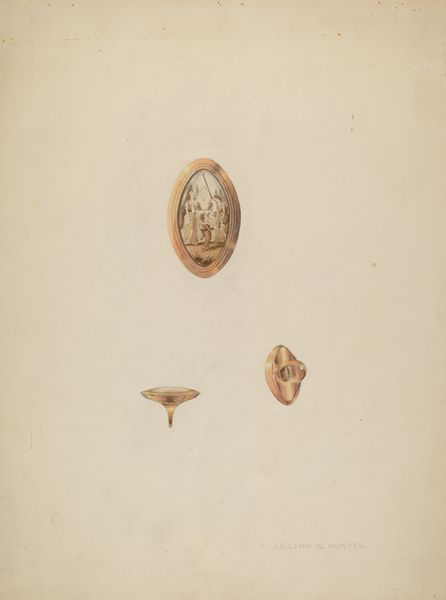
drawing, metal, watercolor, pencil
#
drawing
#
metal
#
watercolor
#
pencil
#
watercolour illustration
#
watercolor
Dimensions: overall: 35.4 x 24.5 cm (13 15/16 x 9 5/8 in.) Original IAD Object: 6 3/4" long; 1 3/4" wide
Copyright: National Gallery of Art: CC0 1.0
Curator: This is Alfred Walbeck's "Silver Folding Spoon," crafted circa 1939, rendered in a captivating blend of watercolor, pencil, and drawing techniques on metal. Editor: My first impression? Utilitarian yet elegant. The muted silver hues against the stark background give it a somewhat somber, industrial feel, despite its ornamental purpose. Curator: Precisely. Consider the historical backdrop of 1939. On the cusp of global conflict, mass production was burgeoning, and functionality began to intertwine with design aesthetics in novel ways. Such a piece as this would represent a subtle yet potent blending of practical needs with lingering desires for handcrafted elegance. Editor: And how would this have been displayed, utilized? The context would radically alter my sense of its inherent meaning. Was it a luxury item during a depression, an art object meant for bourgeois display, or was there a wider democratization of design underway? Curator: Likely the former, given its folding nature suggesting ease of carrying and concealment. Now, let's analyze the spoon itself: the symmetry, the intricate filigree where the spoon pivots... notice how the watercolor accentuates the play of light on the metal surface. This is a functional object elevated into an object of almost pure contemplation. Editor: Yes, the material's handling is key. Note also that the artist depicts this in watercolor with meticulous care; that he or she chose to make the object into a representation rather than showing the object itself tells of this particular cultural attitude. What do you make of the vertical staining on the paper, running the full height of the image, and clearly part of its present being? It is no longer just watercolor but incorporates incidental details beyond the original maker’s control. Curator: Indeed, this highlights the inherent dialectic between intention and chance that runs throughout this piece. The corrosion on the page juxtaposed with the deliberate clarity in design, creates an intriguing tension. Ultimately, a meditation on value, practicality, and the ephemeral nature of beauty in an age of relentless industrialisation. Editor: Ultimately, that very corrosion, in giving the piece greater historical character and narrative presence, heightens its communicative function in our time.
Comments
No comments
Be the first to comment and join the conversation on the ultimate creative platform.
